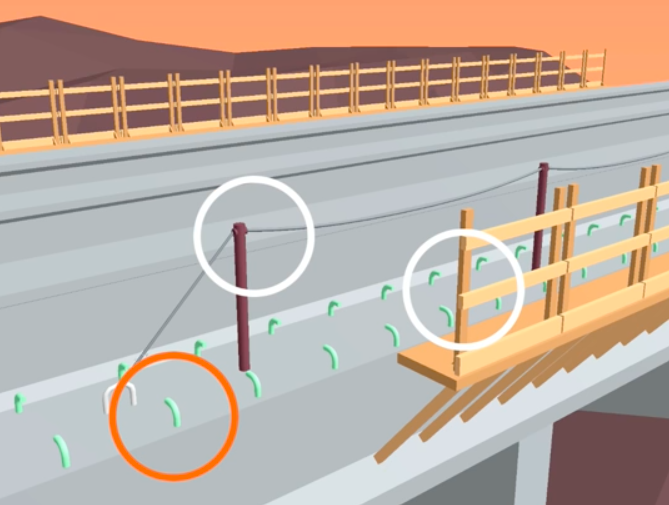
Articles
Education Technology
Creating an Online eLearning Course From Scratch
By eLearning Inside
February 04, 2024
The internet has changed the way the physical world functions. Nowadays, everyone who is connected to it is granted access to countless services and opportunities.
The educational sphere is the one that has undergone the most qualitative changes since any type of educational course, workshop, and schooling can be easily accessed through any type of connected device.
If you are willing to join the team of online educators and spread your knowledge worldwide, follow our guide to learn all the main steps to perform and understand how eLearning is tightened to E-commerce website design and development.
Why Create an Online Course?
There are several benefits to online education, including:
- It enlightens people regardless of age, location, and capabilities.
- Its efficiency is 60% higher than traditional approaches.
- Due to a more targeted approach, students learn the material faster by 30-40%.
The overall E-learning audience coverage is expected to reach 57 million by 2027, with the profitability reaching $370 billion by 2026. Therefore, while being the primary tool for education nowadays, eLearning is also a profitable venture for its creators.
How to Create an Online Course?
The success of the course depends on the level of its proficiency, the functionality of digital solutions, and marketing.
Choose the topic
Udemy, Coursera, Moodle, EdX, MasterClass – these are trailblazers of global educational content, which cover all the possible topics to learn. Therefore, when getting down to course creation, it is important to be ready for a high level of competition, and a rather tough way toward top searches and wide audience coverage.
When considering ideas for course creation, make sure they will have distinctive features compared to already existing ones, and meet the current demand of a certain industry.
Type of the course
Online courses are available in different forms and formats. The most typical division is a mini-course, a multi-day course, and a long-term course.
A mini-course targets one specific skill and can consist of up to 10 videos, lectures, or e-mails. The overall duration of the course shouldn’t exceed a few hours. Oftentimes, mini-courses serve as the introduction to the main course and a great tool to attract new learners. The price doesn’t go over $100, or it can be offered as a free course.
A multi-day course targets a bigger area of knowledge and requires up to seven days for completion. The materials include a video list, worksheets, checklists, quizzes, and any other type of supplementary tools. The price range gets higher, starting from $250.
A long-term course is a series of educational materials that can last more than a few months. It provides the students with extensive knowledge and expertise in certain areas. The pricing starts from $300. A long-term course requires decent skills in course creation to build a system of knowledge, break down the topics, categorize the knowledge, etc.
It is best to start with mini-courses and learn how everything works, and then gradually move on to more extensive forms. Besides, when starting with a mini-course, you have better chances to attract new learners and introduce them to your product.
Content creation
Educational content can be presented in the form of videos, lectures, presentations, photos, e-mails, quizzes, etc. While all the types possess different characteristics, there is one thing that should unite all of them – quality.
Considering the high level of expectations from users, the quality of all the materials should be beyond reproach.
Digital tools
Once the content is created it is time to share it online and organize the whole learning process.
The first step is to adopt a learning management system (LMS) – a type of software that helps with the administration, delivery, tracking, and reporting of educational materials. The most recognizable are LearnUpon, iSpring, Absorb, Talent LMS, etc. While sharing the same purpose – learning management – they offer different solutions to the way the course is presented to the customer.
The second step is the integration of your course and LMS with leading eCommerce platforms, like Shopify, to make the product accessible for purchasing. The integration can be performed with the help Shopify web development services, which will ensure the seamless performance of your eLearning store.
Marketing
After mastering the course, and all the supporting materials, it is time to start a promotional campaign, which will make your product visible to the target audience. Social media posts, guest posts, advertisements, influencer marketing, word of the month – everything will work perfectly to establish the online visibility of the course.
You can also target Internet resources like Quora and Reddit, as Internet users often use them to search for proper courses.
When just starting the eLearning business, it’s important to offer free courses and discounts for the customers, to let them see the value of the product, and thus, proceed with full-payment courses.
The Bottom Line
eLearning is one of the most developing industries nowadays. While offering tremendous benefits to our society, and bringing knowledge to all people regardless of distance and age, it also is a source of profit for its creators.
The course creation consists of a few major steps:
- Outlining the idea of the course for a specific target group.
- Choice of course type and content creation.
- Selection of the Learning Management System, to host your materials, and its further integration with the E-commerce platform, like Shopify, to sell the courses.
- Marketing.
When following these basic steps, you are sure to create an eLearning course that will meet a specific demand of the customers, reach a wide audience of users, and improve the financial benefits.
If you found this helpful, try out Online Math and English Games to Help Kindergarten Students.
Featured image credit: Muhamad Chabib alwi, iStock.









No Comments